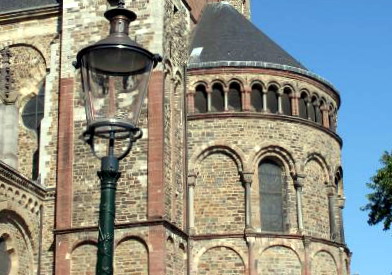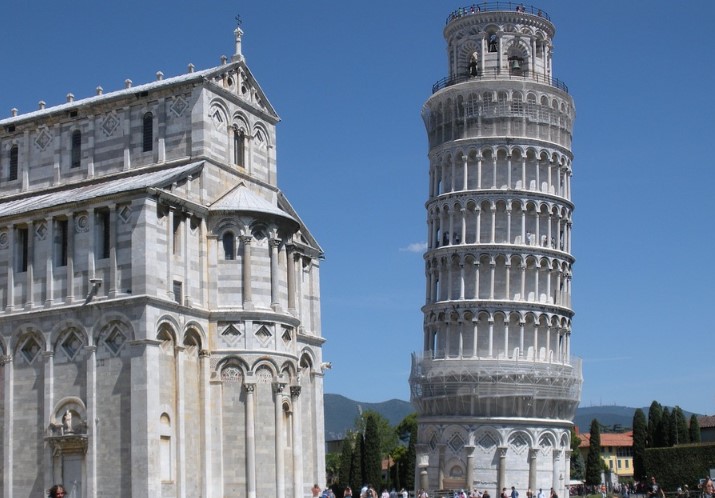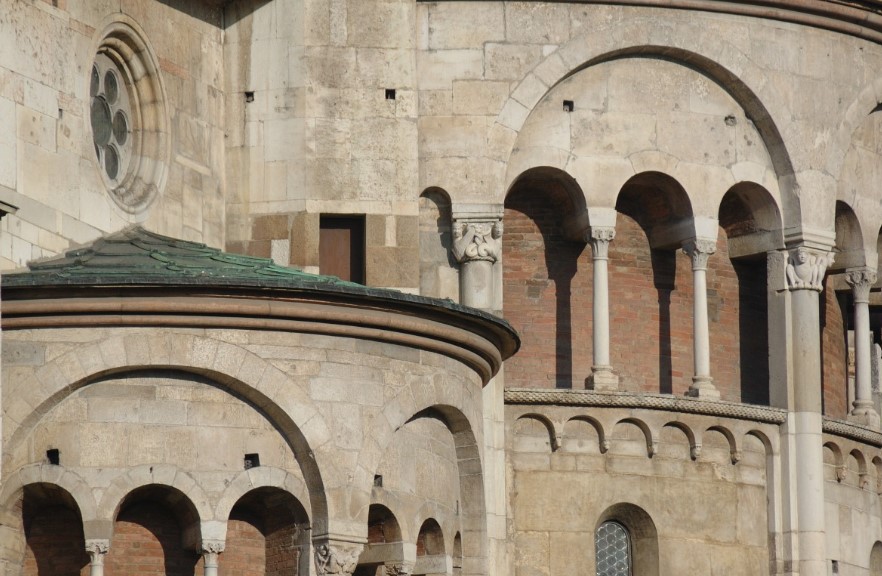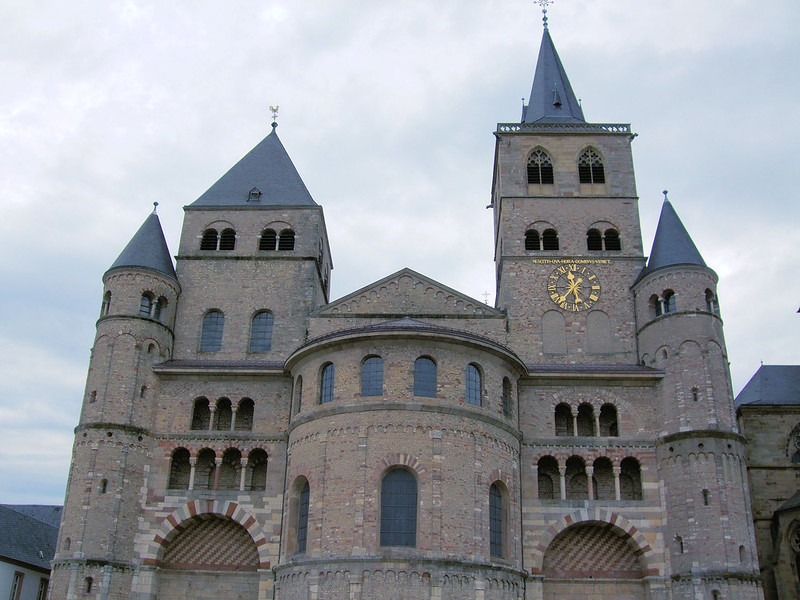Dwarf gallery
 Worms Cathedral, Worms, Germany (completed in 1181).
Worms Cathedral, Worms, Germany (completed in 1181).
Romanesque architecture mainly developed in Europe in the Middle Ages between the 10th and 12th centuries. It adopted some of the features of Roman and Byzantine architectural forms and materials, characterised by thick walls, round arches, vaults and vast towers. It was a pan-European style, although it is often referred to as 'Norman' in the UK.
One of the distinct features of Romanesque architecture, and some of the styles it was derived from, is the dwarf gallery. While the origin of the name is unknown, some suggest the term was used because the gallery was thought to be a passage for spirits or imps.
Dwarf galleries are typically inaccessible and purely decorative. They serve no practical purpose and are only a visual element, although some dwarf galleries have been used by priests to showcase religious items to crowds below.
Most often found in churches in Germany and Italy (although a few examples do exist in France and the Netherlands), dwarf galleries are covered passageways several stories above the ground (often towards the top of the structure) on the exterior of a building. They are typically closed in by a solid wall on one side. The outward facing side is open for public view and may be decoratively lined with columns that are sometimes linked together by arches.
[edit] Famous dwarf galleries
Mainz Cathedral, Mainz, Germany (dedicated in 1009).
Southeastern choir tower, apse and dwarf gallery, St Servatius, Maastrict, Netherlands (dedicated in 1039).
(Left) Pisa Cathedral, Pisa, Italy (consecrated 1118) and (right) Leaning Tower of Pisa, featuring six rings of dwarf galleries (completed in 1372).
Modena Cathedral, Modena, Italy (1184).
Trier Cathedral, Trier, Germany (current structure completed 1270).
In Notre-Dame de Paris (completed in 1345), the Gallery of Kings (located just below the rose window) is a dwarf gallery that was filled with statues depicting 28 figures known as the Kings of Judah. These statues were destroyed during the French Revolution, but their heads were saved, hidden and then donated to the Musée de Cluny. They were replaced by 19th century reproductions.
[edit] Related articles on Designing Buildings Wiki
Featured articles and news
RTPI leader to become new CIOB Chief Executive Officer
Dr Victoria Hills MRTPI, FICE to take over after Caroline Gumble’s departure.
Social and affordable housing, a long term plan for delivery
The “Delivering a Decade of Renewal for Social and Affordable Housing” strategy sets out future path.
A change to adoptive architecture
Effects of global weather warming on architectural detailing, material choice and human interaction.
The proposed publicly owned and backed subsidiary of Homes England, to facilitate new homes.
How big is the problem and what can we do to mitigate the effects?
Overheating guidance and tools for building designers
A number of cool guides to help with the heat.
The UK's Modern Industrial Strategy: A 10 year plan
Previous consultation criticism, current key elements and general support with some persisting reservations.
Building Safety Regulator reforms
New roles, new staff and a new fast track service pave the way for a single construction regulator.
Architectural Technologist CPDs and Communications
CIAT CPD… and how you can do it!
Cooling centres and cool spaces
Managing extreme heat in cities by directing the public to places for heat stress relief and water sources.
Winter gardens: A brief history and warm variations
Extending the season with glass in different forms and terms.
Restoring Great Yarmouth's Winter Gardens
Transforming one of the least sustainable constructions imaginable.
Construction Skills Mission Board launch sector drive
Newly formed government and industry collaboration set strategy for recruiting an additional 100,000 construction workers a year.
New Architects Code comes into effect in September 2025
ARB Architects Code of Conduct and Practice available with ongoing consultation regarding guidance.
Welsh Skills Body (Medr) launches ambitious plan
The new skills body brings together funding and regulation of tertiary education and research for the devolved nation.
Paul Gandy FCIOB announced as next CIOB President
Former Tilbury Douglas CEO takes helm.
UK Infrastructure: A 10 Year Strategy. In brief with reactions
With the National Infrastructure and Service Transformation Authority (NISTA).




























